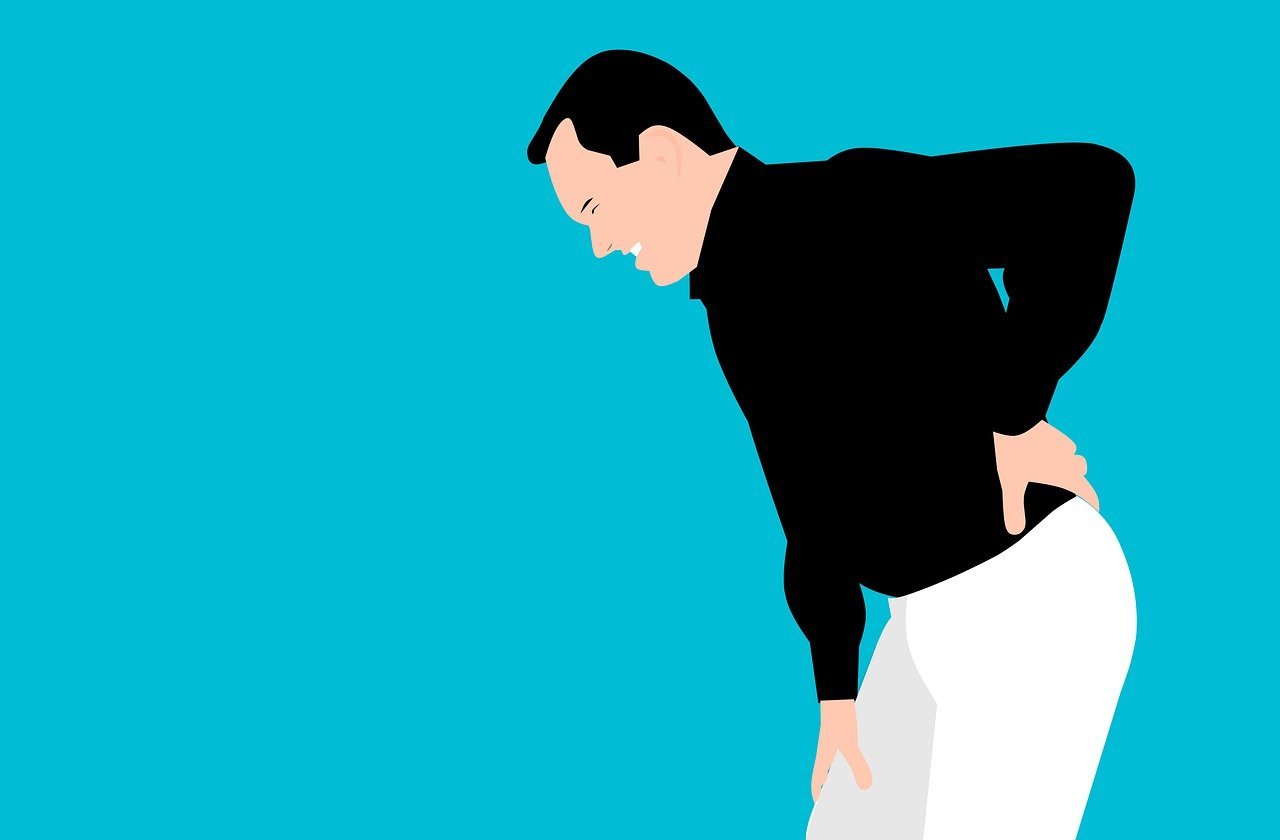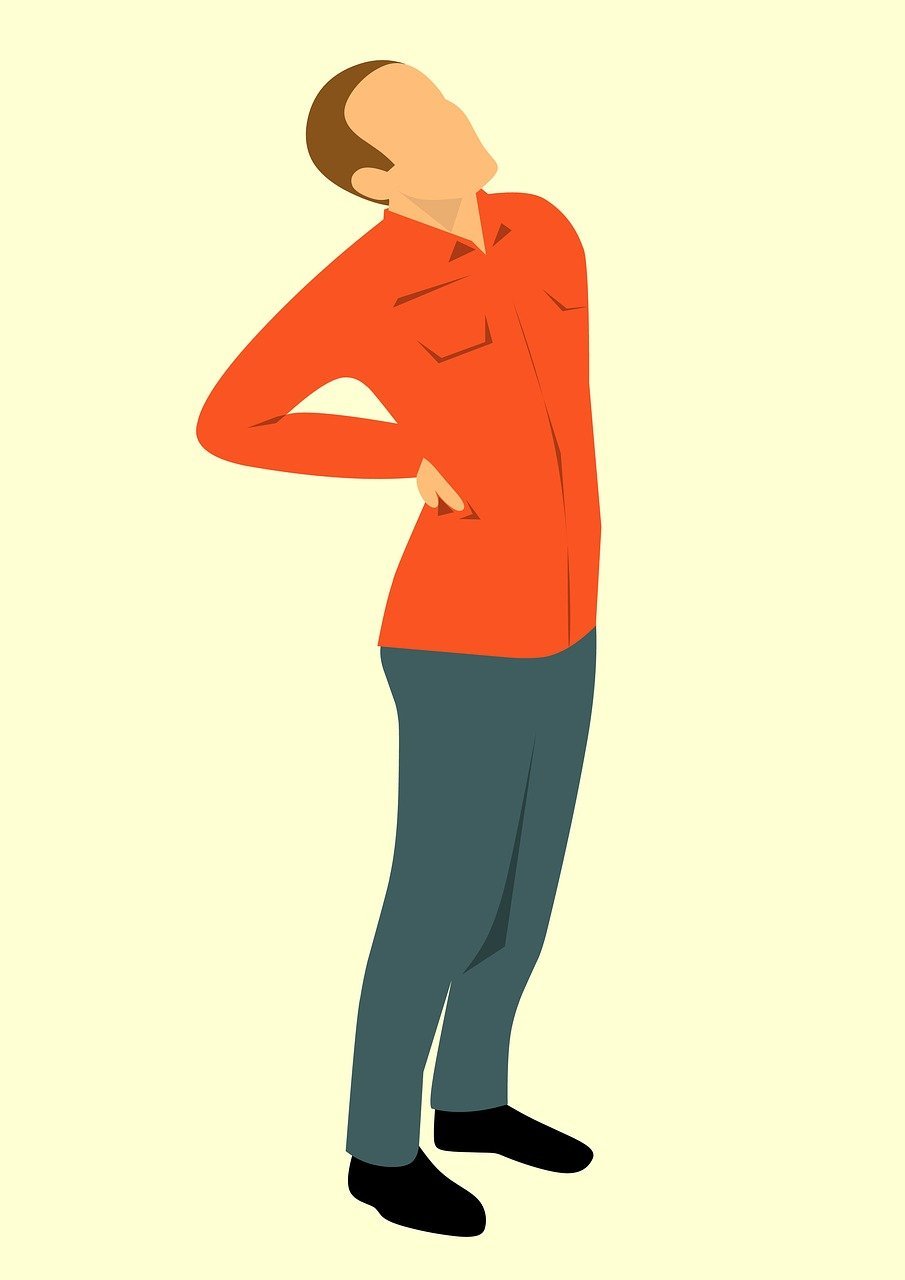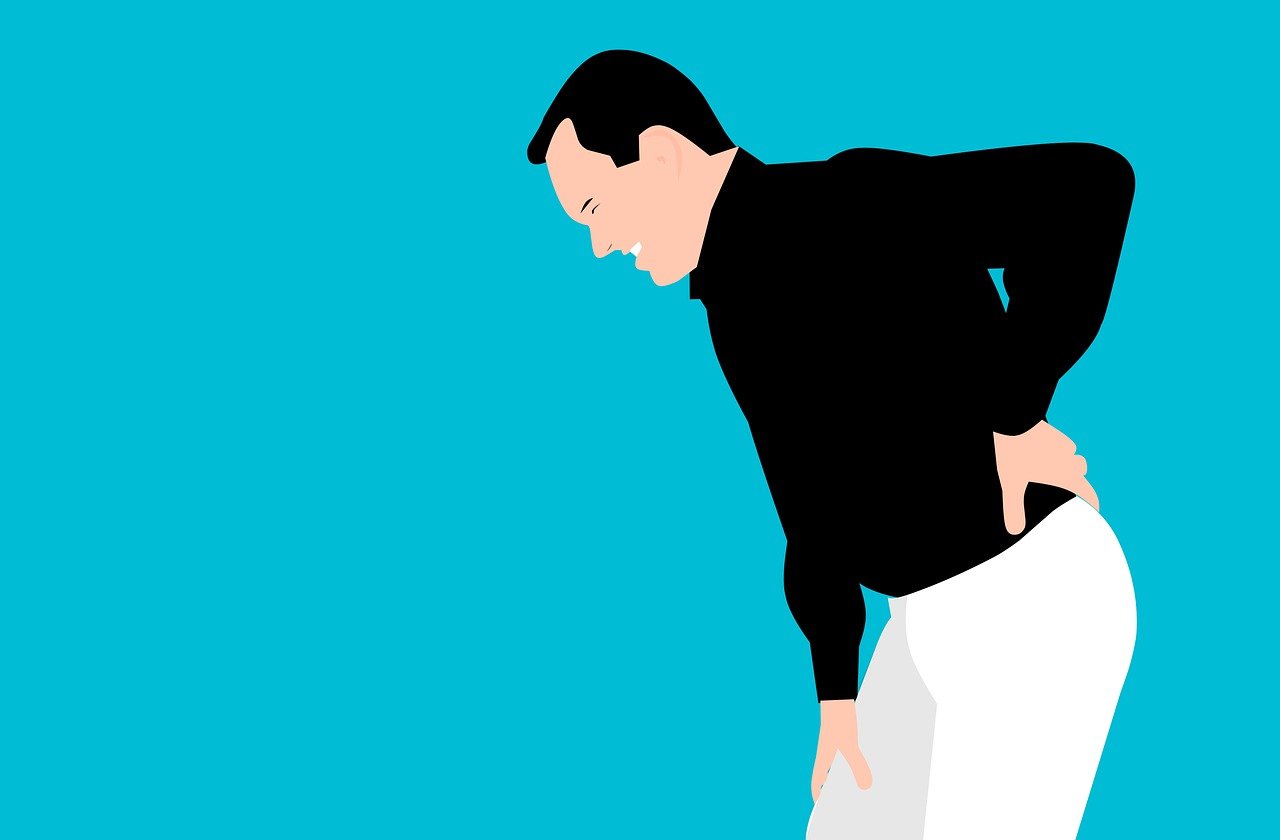
If you’ve ever experienced lower back pain when lying on your back, you know just how uncomfortable and frustrating it can be. The good news is, there are simple and effective techniques you can try to relieve this discomfort. Whether you’re dealing with a specific injury or chronic pain, this article will provide you with helpful tips and techniques to alleviate the ache and promote a better night’s sleep. So, if you’re tired of tossing and turning, and are ready to find relief, read on to discover how you can alleviate lower back pain when lying on your back.

Stretching Exercises
Hamstring Stretch
One effective way to relieve lower back pain when lying on your back is by performing a hamstring stretch. This stretch targets the muscles at the back of your thighs, which can contribute to lower back pain if they are tight or strained. To perform this stretch, start by lying on your back with your legs stretched out straight. Slowly bring one leg towards your chest, keeping the knee slightly bent. Use both hands to hold onto the back of your thigh and gently pull towards your chest until a comfortable stretch is felt. Hold this position for 20-30 seconds before switching to the other leg.
Knee-to-Chest Stretch
Another beneficial stretch for relieving lower back pain is the knee-to-chest stretch. This stretch helps to release tension in the lower back muscles and increase flexibility. Start by lying on your back with your legs straight. Slowly bring one knee towards your chest while keeping your other leg extended. Use your hands to gently pull your knee closer to your chest until you feel a gentle stretch in your lower back. Hold this position for 20-30 seconds before switching to the other leg.
Spinal Twist
The spinal twist stretch is a great way to relieve tension in the lower back and hips. To perform this stretch, start by lying on your back with your legs extended. Gently bend your knees and bring them towards your chest. Keep your arms out to the sides, palms facing down. Slowly lower both knees to one side, while trying to keep your upper body as still as possible. Hold this position for 20-30 seconds before slowly returning to the starting position. Repeat on the other side.
Piriformis Stretch
The piriformis muscle is a small muscle located deep in the buttock region. When this muscle is tight or inflamed, it can contribute to lower back pain. One way to stretch the piriformis muscle is by lying on your back and crossing one ankle over the opposite knee. Use your hands to gently pull the uncrossed leg towards your chest until you feel a stretch in the buttock area. Hold this position for 20-30 seconds before switching to the other side.
Supportive Pillows and Mattresses
Orthopedic Pillows
Using supportive pillows is essential for maintaining proper spinal alignment and relieving lower back pain when lying on your back. Orthopedic pillows are specifically designed to provide support to the neck and head, ensuring that they are in a neutral position. These pillows are often made from memory foam or latex, which contours to the shape of your head and neck, promoting optimal comfort and support. By using an orthopedic pillow, you can minimize strain on your neck and upper back, thereby reducing the likelihood of developing lower back pain.
Memory Foam Mattresses
A mattress plays a crucial role in supporting your body and relieving lower back pain while lying on your back. Memory foam mattresses are an excellent option for individuals experiencing lower back pain. The unique properties of memory foam allow the mattress to conform to your body shape, providing personalized support and relieving pressure points. This helps to maintain proper alignment of the spine, reducing the strain on the lower back. By investing in a high-quality memory foam mattress, you can significantly improve your comfort and decrease the likelihood of waking up with lower back pain.
Inflatable Lumbar Supports
Inflatable lumbar supports are versatile tools that can be easily adjusted to provide customized support to your lower back. These supports are typically made from durable, flexible materials that conform to the shape of your lower back, providing targeted support where you need it the most. By placing an inflatable lumbar support under your lower back while lying on your back, you can help maintain the natural curve of your spine and alleviate pressure on the lower back muscles. This can contribute to a more comfortable sleep and reduce the likelihood of waking up with lower back pain.

Proper Sleeping Position
Supine Position with Pillow Under Knees
The supine position, or lying on your back, can be an advantageous sleeping position for individuals experiencing lower back pain. To enhance the benefits of this position, try placing a pillow under your knees. This helps to maintain the natural curve of your lower back and reduces stress on the lumbar spine. The pillow provides support and alignment to the lower body, allowing your muscles to relax and alleviating tension on the lower back. By adopting this sleeping position and using a pillow under your knees, you can significantly reduce lower back pain.
Fetal Position
For some individuals, sleeping in a fetal position can help alleviate lower back pain. To sleep in the fetal position, lie on your side with your knees bent and pulled towards your chest. This position can help relieve pressure on the spinal discs and allows for a more natural alignment of the spine. Place a pillow between your knees to provide further support and alignment, reducing strain on the lower back. Keep your spine as straight as possible to avoid any unnecessary stress on the back muscles.
Elevating Legs
Elevating your legs while sleeping on your back can also provide relief from lower back pain. To do this, place a pillow or cushion under your legs, ensuring that your knees and ankles are adequately supported. Elevating your legs helps to reduce pressure on the lower back by promoting blood circulation and reducing swelling. This position also helps to stretch the hip flexor muscles, which can become tight and contribute to lower back pain. By incorporating leg elevation into your sleeping routine, you can alleviate lower back pain and improve overall sleep quality.
Heat and Cold Therapy
Applying Heat Packs
Heat therapy can be a soothing and effective way to alleviate lower back pain. Applying a heat pack to the affected area can help increase blood flow, relax muscles, and relieve stiffness and discomfort. You can use a commercially available heat pack or make your own by placing a hot water bottle or microwavable heat pad on your lower back. Be sure to wrap the heat pack in a cloth to prevent direct skin contact and avoid applying heat for an extended period. Start with 15-20 minutes of heat therapy and gradually increase the duration if needed.
Using Cold Packs
Cold therapy is another helpful technique for managing lower back pain. Applying a cold pack or ice pack to the affected area can help reduce inflammation and numb the pain. To use a cold pack, wrap it in a thin cloth and apply it to the lower back for 10-15 minutes. Avoid placing the pack directly on the skin to prevent ice burn. Cold therapy is particularly effective in the first 48 hours following an injury or when experiencing acute pain. Use cold packs multiple times a day, with breaks in between, to manage pain and inflammation effectively.
Contrast Therapy
Contrast therapy involves alternating between heat and cold therapy to maximize their benefits. This technique helps to boost circulation, reduce inflammation, and relieve pain. Start by applying a heat pack to your lower back for 10 minutes, then switch to a cold pack for the next 10 minutes. Continue alternating between heat and cold therapy for a duration that feels comfortable. Contrast therapy can be particularly beneficial for individuals with chronic lower back pain as it promotes relaxation of muscles, reduces inflammation, and provides temporary pain relief.

Over-the-Counter Pain Relief
Nonsteroidal Anti-inflammatory Drugs (NSAIDs)
Over-the-counter nonsteroidal anti-inflammatory drugs, commonly known as NSAIDs, can be an effective option for managing lower back pain. NSAIDs help reduce pain, inflammation, and swelling, allowing you to move more comfortably. Common examples of NSAIDs include ibuprofen, naproxen sodium, and aspirin. However, it is important to follow the recommended dosage and consult a healthcare professional if you have any underlying medical conditions or are taking other medications. NSAIDs can provide temporary relief from lower back pain, but it is essential to address the underlying cause of the pain for long-term relief.
Topical Analgesics
Topical analgesics are another over-the-counter option for relieving lower back pain. These creams, gels, or patches contain ingredients that help to numb the pain and provide localized relief. Topical analgesics are applied directly to the affected area and work by blocking pain signals. Non-prescription options commonly include menthol, camphor, capsaicin, or lidocaine. It is important to carefully read and follow the instructions on the packaging before using topical analgesics. These products can be a convenient and effective alternative to oral pain relief medication, particularly for individuals who experience side effects from oral medication.
Professional Treatments
Physical Therapy
Physical therapy is a professional treatment option that can greatly alleviate lower back pain when lying on your back. A physical therapist will assess your condition and develop an individualized treatment plan to address the specific causes of your pain. This may include exercises to strengthen your core muscles, stretches to improve flexibility, and manual therapy techniques to alleviate muscle tension. Physical therapy aims to improve posture, enhance mobility, and provide long-term relief from lower back pain. Working closely with a skilled physical therapist is an effective way to target the root cause of your pain and develop strategies for managing it.
Chiropractic Care
Chiropractic care is a non-invasive treatment approach that focuses on aligning the spine and promoting overall musculoskeletal health. A chiropractor will perform adjustments or manipulations to correct any misalignments or imbalances in the spine, which can contribute to lower back pain. These adjustments aim to relieve pressure on the nervous system, reduce inflammation, and improve overall spinal function. Chiropractic care may also include other therapies such as massage, stretching, and rehabilitative exercises. By seeking chiropractic care, you can experience relief from lower back pain and gain a better understanding of how to maintain a healthy spine.
Acupuncture
Acupuncture is a traditional Chinese medicine technique that involves the insertion of thin needles into specific points on the body. This practice is believed to stimulate the body’s natural healing process and promote pain relief. When it comes to lower back pain, acupuncture can be an effective complementary treatment option. The needles are inserted near the affected area, as well as in other areas of the body known to be related to lower back pain. Acupuncture has been shown to help reduce pain, improve flexibility, and promote relaxation. Consult with a qualified acupuncturist to determine if this treatment option is suitable for you.
Massage Therapy
Massage therapy can provide significant relief from lower back pain when lying on your back. A skilled massage therapist can use various techniques to target the affected muscles, release tension, improve circulation, and promote relaxation. Different massage techniques, such as Swedish massage or deep tissue massage, may be applied to address specific issues related to lower back pain. Regular massage therapy sessions can help improve flexibility, reduce muscle spasms, and alleviate pain. It is essential to work with a licensed massage therapist who has experience treating individuals with lower back pain to ensure a safe and effective treatment.
Strengthening Core Muscles
Plank Exercise
Strengthening the core muscles is crucial for maintaining a healthy back and reducing lower back pain. The plank exercise is a highly effective way to engage and strengthen the deep abdominal and back muscles. To perform a plank, start by lying on your stomach. Place your forearms on the ground, with your elbows shoulder-width apart. Lift your body off the ground, resting on your forearms and toes. Keep your body in a straight line from your head to your heels, engaging your core muscles. Hold this position for as long as you can, gradually increasing the duration over time.
Bridges
Bridges are another excellent exercise for strengthening the core muscles and alleviating lower back pain. Start by lying on your back with your knees bent and feet flat on the ground. Place your arms by your sides. Engage your core, squeeze your glutes, and lift your hips off the ground until your body forms a straight line from your knees to your shoulders. Hold this position for a few seconds before slowly lowering your hips back down. Repeat this exercise for a few repetitions, gradually increasing the number as your strength improves.
Pelvic Tilts
Pelvic tilts are a simple yet effective exercise for strengthening the core muscles and improving lower back stability. Start by lying on your back with your knees bent and feet flat on the ground. Place your hands on your hips. Slowly tilt your pelvis forward, flattening your lower back against the floor. Hold this position for a few seconds before tilting your pelvis back, lifting your lower back slightly off the ground. Repeat this movement for a few repetitions, focusing on the engagement of your core muscles and maintaining control throughout the exercise.
Avoiding Excessive Bed Rest
Gradual Increase in Activity Level
While it may be tempting to stay in bed when experiencing lower back pain, it is important to avoid excessive bed rest. Prolonged periods of inactivity can lead to muscle stiffness, weakness, and a delay in the healing process. Instead, it is recommended to gradually increase your activity level as tolerated. Start with light movements and gentle exercises that do not aggravate your lower back pain. Walking, swimming, and stretching exercises can be beneficial for maintaining mobility and promoting circulation. Listen to your body and progress at a pace that feels comfortable, gradually increasing the duration and intensity of your activities.
Frequent Rest Breaks
When engaging in activities or tasks that require prolonged periods of sitting or standing, it is essential to take frequent rest breaks. Sitting or standing for long durations can place excessive stress on your lower back and contribute to pain. Set a timer or use reminders to prompt yourself to take breaks every 30 minutes. During these breaks, perform gentle stretches, walk around, or change positions to alleviate pressure on the lower back. By incorporating regular rest breaks into your daily routine, you can help prevent or reduce lower back pain caused by prolonged periods of sitting or standing.
Maintaining Proper Posture During Sleep
Pillow Placement
Proper pillow placement is essential for maintaining proper posture and reducing lower back pain during sleep. When lying on your back, place a pillow under your head and neck to support the natural curve of your cervical spine. Additionally, consider placing a small pillow or rolled-up towel under your lower back to help maintain the natural curve of your lumbar spine. If you prefer sleeping on your side, use a thicker pillow to ensure that your head and neck are aligned with your spine. Proper pillow placement can help reduce strain on your back, improve spinal alignment, and alleviate lower back pain.
Choosing the Right Mattress
Choosing the right mattress is crucial for maintaining proper posture and preventing lower back pain. Ideally, you should select a mattress that provides adequate support and contours to the natural curves of your body. Medium-firm or firm mattresses are generally recommended for individuals experiencing lower back pain. These mattresses provide optimal support and help distribute your body weight more evenly, reducing pressure points. Test different mattresses or consult with a mattress specialist to find the best option for your specific needs and preferences. Investing in a high-quality mattress can significantly improve your comfort and alleviate lower back pain.
Sleeping on a Firm Surface
For some individuals, sleeping on a firm surface can help alleviate lower back pain. This can be achieved by placing a board or plywood under the mattress to increase its firmness. A firm surface can help maintain proper spinal alignment and prevent excessive sinking or sagging while lying on your back. If you find that your current mattress is too soft or does not provide enough support, this simple modification can make a significant difference in reducing lower back pain. Experiment with different levels of firmness to find the most comfortable and supportive sleeping surface for your needs.
Weight Management
Healthy Diet
Maintaining a healthy weight through a balanced diet is important for managing lower back pain. Excess weight places additional stress on the joints, including the lower back, and can contribute to pain and inflammation. Incorporate a variety of fruits, vegetables, whole grains, lean proteins, and healthy fats into your diet to provide essential nutrients and promote overall wellness. Limit your intake of processed foods, sugary snacks, and unhealthy fats. By adopting a healthy eating lifestyle, you can reduce the strain on your lower back and improve your overall health and well-being.
Regular Exercise
Regular exercise is crucial for weight management and maintaining a healthy lower back. Engaging in physical activity helps strengthen the muscles that support the spine, improve flexibility, and promote overall musculoskeletal health. Aim for at least 150 minutes of moderate-intensity aerobic exercise, such as brisk walking or swimming, each week. Additionally, incorporate strength training exercises that target the core muscles to improve stability and reduce the risk of lower back pain. Always consult with a healthcare professional before starting a new exercise program, especially if you have pre-existing medical conditions or injuries.
By following these strategies and incorporating them into your daily routine, you can effectively relieve lower back pain when lying on your back. Remember to listen to your body, make necessary modifications based on your individual needs, and consult with a healthcare professional if you have severe or persistent pain. With proper attention to your posture, stretching exercises, supportive pillows and mattresses, pain relief measures, professional treatments, core muscle strengthening exercises, activity levels, and weight management, you can achieve a healthier and pain-free lower back.





